In by far the majority of cases, materials that have been weathered and/or eroded, are transported elsewhere and eventually settle. Sedimentation is the processes to which these materials are subjected to until they are deposited, and transport is the main mechanisms involved. This transportation can be done either in solution or in the solid state. In the case of solutions, only water is relevant, but these sediments are not very common and will be presented under Non-Clastic Sediments (item 6.5). The other materials occur as fragments, termed clasts and, depending on their size, are transported either in suspension, or, if they are considerably larger and/or heavier, they move by saltation. That is, in a series of short intermittent hops close to the ground. Or, if they are really heavy they simply roll along the surface.
As for the transporting mechanism, the clastic sediments are subdivided into:
Terrestrial – Aeolian; Glacial; Aluvial; Delta/Estuary
Marine – Wave Dominated; Tide Dominated; Bathyal/Abyssal.
6.1 Aeolian Environment
Like with erosion, we start with the least energetic agent, air. Aeolian sediments range in the very lower volumetric size in suspension, and a marginally larger dimension in saltation. For wind to be an effective erosion/sedimentation agent, the ground must be unprotected which, under general conditions, means little or no vegetation. Hence the aeolian sedimentary environment is restricted to deserts (fig. 89) and unprotected coast lines (fig. 90).
Aeolian deposits consist of dunes formed by rather fine grained sand and characteristically have large scale cross-bedding, which refers to the internal arrangement of the sedimentary layers being formed by minor beds or laminae inclined to the principal bedding planes. Deposition takes place on the downwind side and, at the base, the cross strata sets have a low angle, but upwards the dips increase to over 10º.
It is easier to identify cross-bedding in consolidated rocks. I have only seen consolidated desert dunes in the Namibe desert in Angola, but no cross stratification was apparent and, as figure 89 shows, if anything, planar stratification seems to be more likely.
On the other hand, the cross bedding is absolutely distinct at the Magoito consolidated coastal dune. In figure 91 we see a set of moderately steep cross beds at the top, with an almost flat set below, but still quite high up the present dune’s cross section. Since these flat sets tend to form at the base, we must assume that the upper set represents the base of the dune during a later migration stage.
Large sand deserts are common in areas of low relief and the various types of dunes are a consequence of the local prevailing winds. I have no examples of these, but the best known ones are:
Dome-shaped dunes, consisting of low, circular, isolated mounds;
Transverse dunes, consisting of almost straight sand ridges at about right angles to the predominant winds;
Longitudinal dunes, also consisting of long sand ridges, but this time oriented along the vector resulting from two converging wind directions;
Barchan dunes, have a crescent shape with the horns extending downwind.
6.2 Glacial Environment
Sedimentation related to glaciation is limited. Its only true representative is the tillite, which is an unstratified, very poorly sorted sediment, composed mainly of fine clasts, but containing disseminated large to very large boulders often striated and faceted. Tillites predominantly cover relatively small areas, other than when they are related to extensive ice ages. I have no representative photos, but I feel I must mention it here as a matter of completeness. The most common present day examples occur across glacial valleys, have a mound shape, and are then termed moraines, forming at the site where the glacier melted during a moderately long period. If large enough, these moraines act as dam walls, giving rise to the well known elongated glacial lakes, of which I show a nice sized one in Slovenia (fig 92),
and a rather small one in Portugal (fig. 93).
6.3 Alluvial Environment
6.3.1 Ephemeral Stage
6.3.1.1 Ravine Fill
The most basic of these sediments are those deposited on steeply inclined valleys caused by ravinement, (fig. 58), where the resulting sediments are a consequence of flash floods. That is, they are characterised by high energy environments, but with short periods of action. Naturally they show very poor sorting as well as roundness, and they tend to occur within relatively long confined channels with very steep sides, for which I present the following examples:
- Figure 94 shows the present day infilling of a ravine, with a very unsorted assemblage of predominately small clasts.
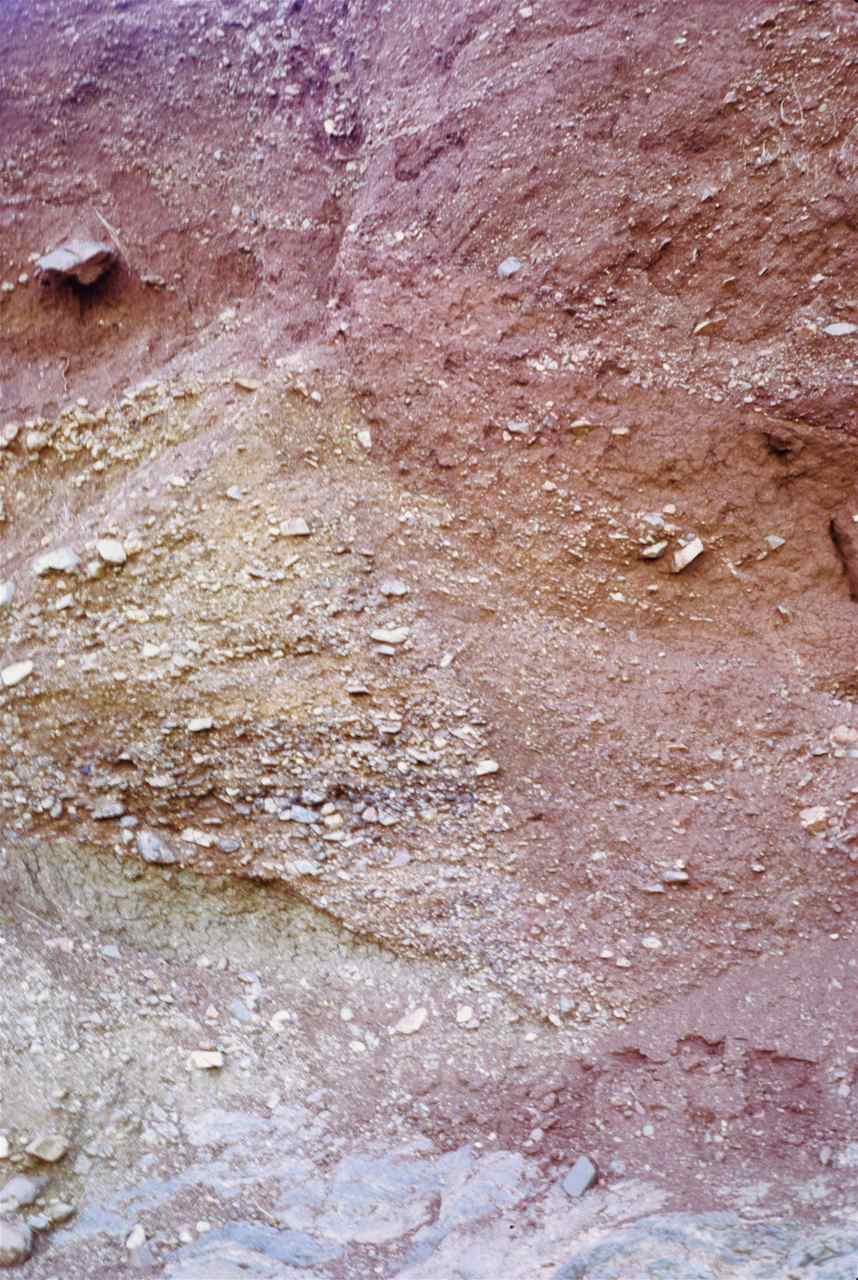
Figure 94 – Present day infill of a ravine (view approximately 2 m high) (Barberton Mountain Land, South Africa).
- Figure 95 shows a close up of the infill at the edge of a ravine cutting across a Jurassic age limestone where again, the clasts are very unsorted and very poorly rounded.
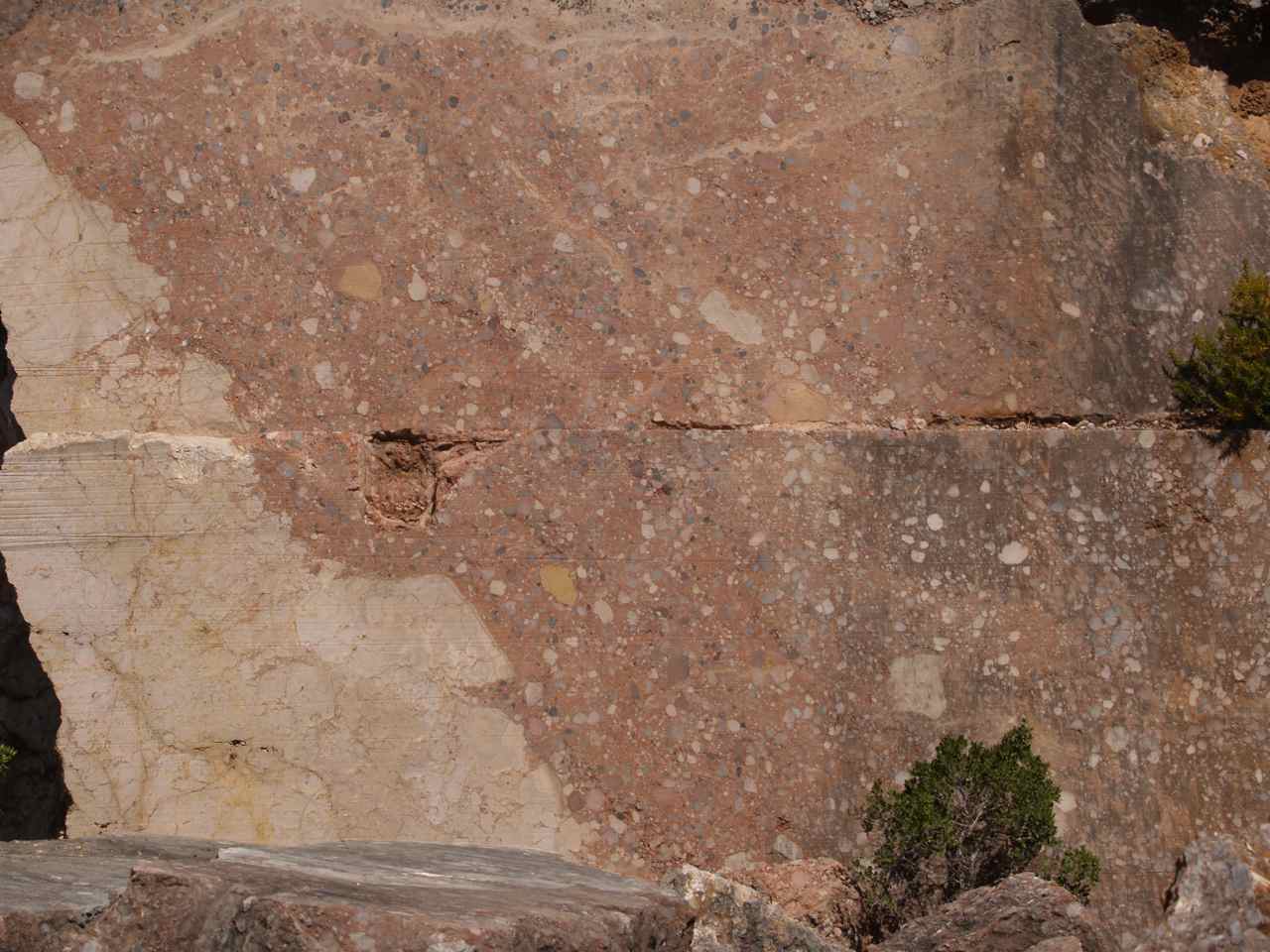
Figure 95 – Infill of a ravine cutting a limestone succession (Arrábida Mountain range, Portugal) – Close up of the edge (quarry face, cutting done by diamond wire) (hight of picture, approximately 2 m)
However, at the bottom of the ravine there is a considerable concentration of the larger and somewhat better rounded clasts (fig. 96).
- Figure 97 shows another example of the infilling of the base of a ravine. Notice the similarity with the infill at the base of the ravine in the limestone of the previous figure, but for this example I use the gold bearing Ventersdorp Contact Reef (VCR), which lies stratigraphically at the top of the Witwatersrand Supper Group, in South Africa, and where siliciclasts predominate.
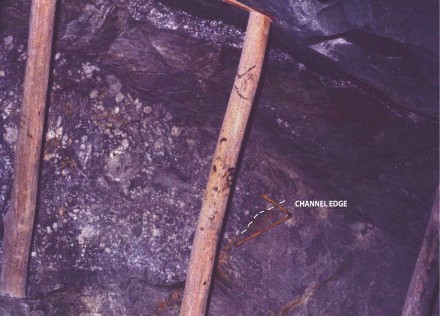
Figure 97 – VCR infill at the base of a Ventersdorp age ravine (stope hight, approximately 1.5 m) (East Driefontein Gold Mine S. Africa).
6.3.1.2 Piedmont
Next there is the Piedmont, meaning a deposit at the base of a hill, and its most important sediment type is the alluvial fan which is a low, outspread, relatively conical succession of rather laminar beds comprised by poorly sorted clasts, deposited by water flash flows from narrow mountain valleys upon a flat surface. Each of these stacked sedimentary layers represent individual flush discharge periods caused by heavy rain downpours. When large clasts predominate, the assemblage is termed a debris flow and this was the principal environment during the deposition of the VCR, with figure 98 showing a classical example of two separate flow periods of large clasts, separated by a shorter flow period of coarse grained sand. Notice also how poorly rounded, packed and sorted the clasts are.
Often too, the composition of these clasts is very varied (fig. 98B).
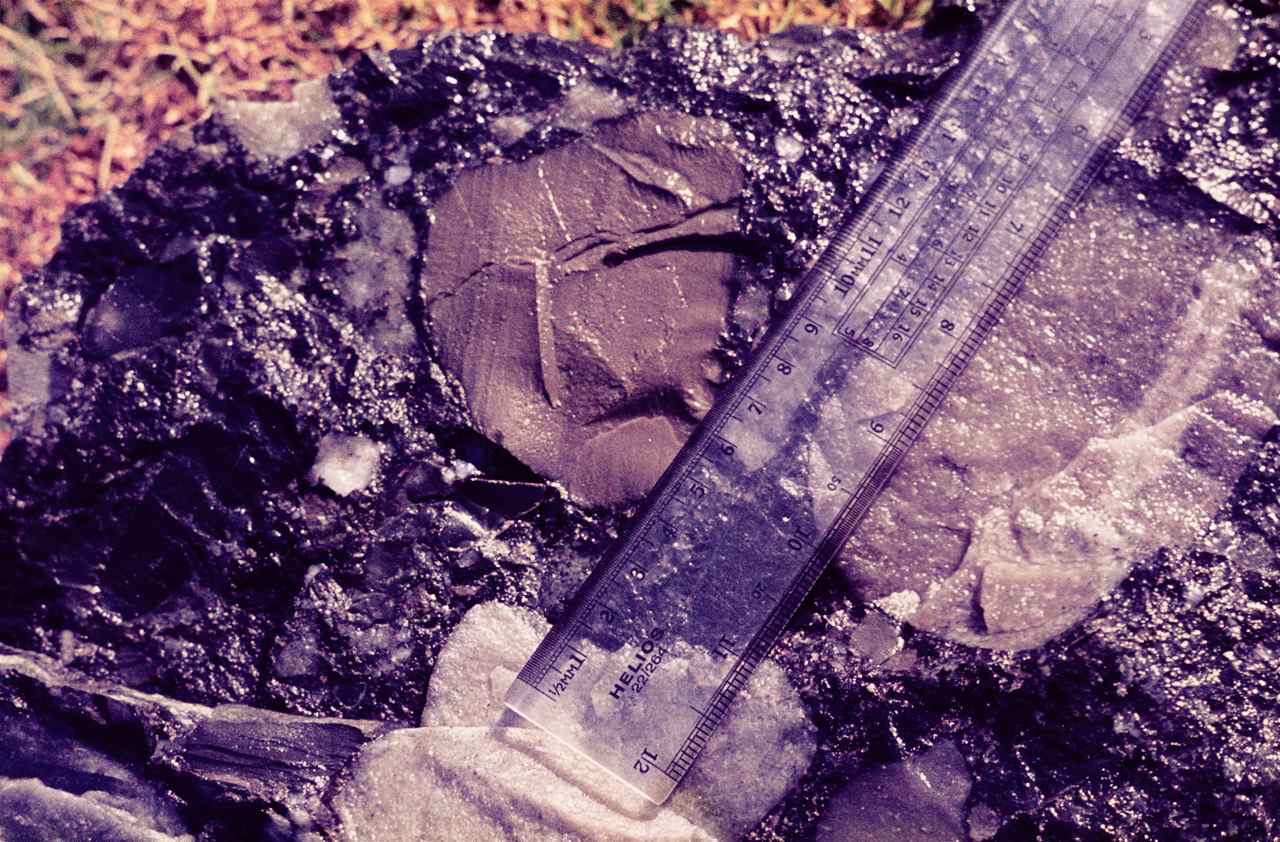
Figure 98B – Example of clast composition variation within the VCR (East Driefontein Gold Mine S. Africa).
6.3.2 Mature Stage
6.3.2.1 Braided Streams
Of the different fluvial facies, the first important stage of deposition is perhaps the braided flow regime, where the master stream separates into numerous channels. The energy level is still very high and the deposition of heavy clasts predominates, forming inter-tonguing lenses or small sheets of sediments characterized by cut and fill structures and abrupt changes in particle sizes. A reasonably contemporaneous example can be seen along the Vaal River near Ulco in South Africa, where inter-tonging sand and gravel bars occur and the gravel sections are locally mined for alluvial diamonds (fig. 99).

Figure 99 – Braided river gravel bar, mined for alluvial diamonds (view approximately 4 m high) (Vaal River, Northern Cape, S. Africa).
Detailed observation of this type of environment shows quite nicely the relationship between adjoining bars of coarser and finer clasts (fig. 99B).
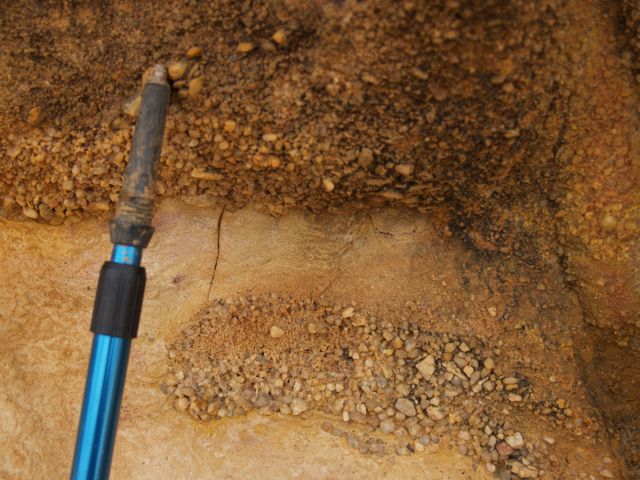
Figure 99B – Close up of inter-fingering grit and sand bars within a braided river sedimentary environment (Lizandro River mouth area, Portugal)
Naturally this alluvial high energy regime is also a sorting mechanism, where the most important factor is mass rather than volume and an obvious example is shown in figure 100 where we have large well rounded quartz pebbles with an SG of 2.6, associated with much smaller, also well rounded, pebbles of pyrite (buck shot), with a significantly higher SG of 5.0. Gold, with an even higher SG of 18, consequently needing much smaller dimensions is also present. In fact, it is seldom visible by the naked eye. In this case though, if my memory does not fail me, at the bottom right hand corner of the picture, those small shiny specks are gold. Returning to figure 99, it is now more easy to understand why the search for diamonds concentrates on the gravel lenses, even though the diamond’s SG is not that high, 3.5.

Figure 100 – Channel type VCR rich in “buckshot” pyrite (sample approximately 20 x 10 cm) (East Driefontein Gold Mine, Carletonville, S. Africa).
Grading, defined as the gradual upward reduction of clast size within a stratigraphic succession, is caused by the diminishing flow strength of the transporting medium. Thus, it must also be included here because it happens as the river reduces speed when reaching a section of its course with a lower gradient. Once again we have a very good text book example from the VCR (fig. 101).
6.3.2.2 Meandering
The meandering stage of the river is when high levels of deposition really begin. Meandering starts developing with the reduction of the water velocity, where the heavier gravel and sand start to deposit, preferentially at the inner side of the bends, where the speed is least, thus forming point bars which, with time enhances those bends. The sand concentration at the inner side of the bends is quite distinct in figure 102.
During flood periods, the river overflows its banks, dramatically reducing the flow speed and depositing the very fine silts and muds in suspension, giving rise to rich agricultural soils over the flood plains, also quite distinctly seen.
Hence, these marshy areas contain predominantly silts and muds which, during the dry season will desiccate, forming very characteristic mud cracks. Figure 102B, shows a present day example, where mud cracks have formed very recently,
and figure 102C, shows consolidated mud cracks as well as casts.
A magnificent text book example though, is the one seen in figure 102D,
where even the actual curling at the edges of the mud crack slabs was preserved (fig. 102E). As for the slight ripples along the edges and the indentations at the centre of some of the mud plates, I assume they were caused by rain drops, just before there was a new inflow of sediments which covered and thus preserved them.
From the above, it is apparent therefore that mud cracks, seen forming in a present day soil in figure 102B, when covered by new sediments and preserved, are another very useful indicator of a palaeosol, to add to those mentioned under weathering (item 3.2).
6.3.2.3 Estuary/Delta
Within this kind of fertile flood plane environment, we should expect abundant fauna and flora, and the richest portion must surely be the estuary or delta, where the river water rich in all sorts of organic matter, contacts the ocean’s salt water. Evidence of the fertility of this type of environment can be seen where there is a significant tidal variation, because the mud-flats get exposed (fig. 102F).
When these present day soils are preserved, forming future palaeosols, the signs of the various types of burrowing animals gives very distinct characteristics to those horizons, termed bioturbated (fig. 102G).
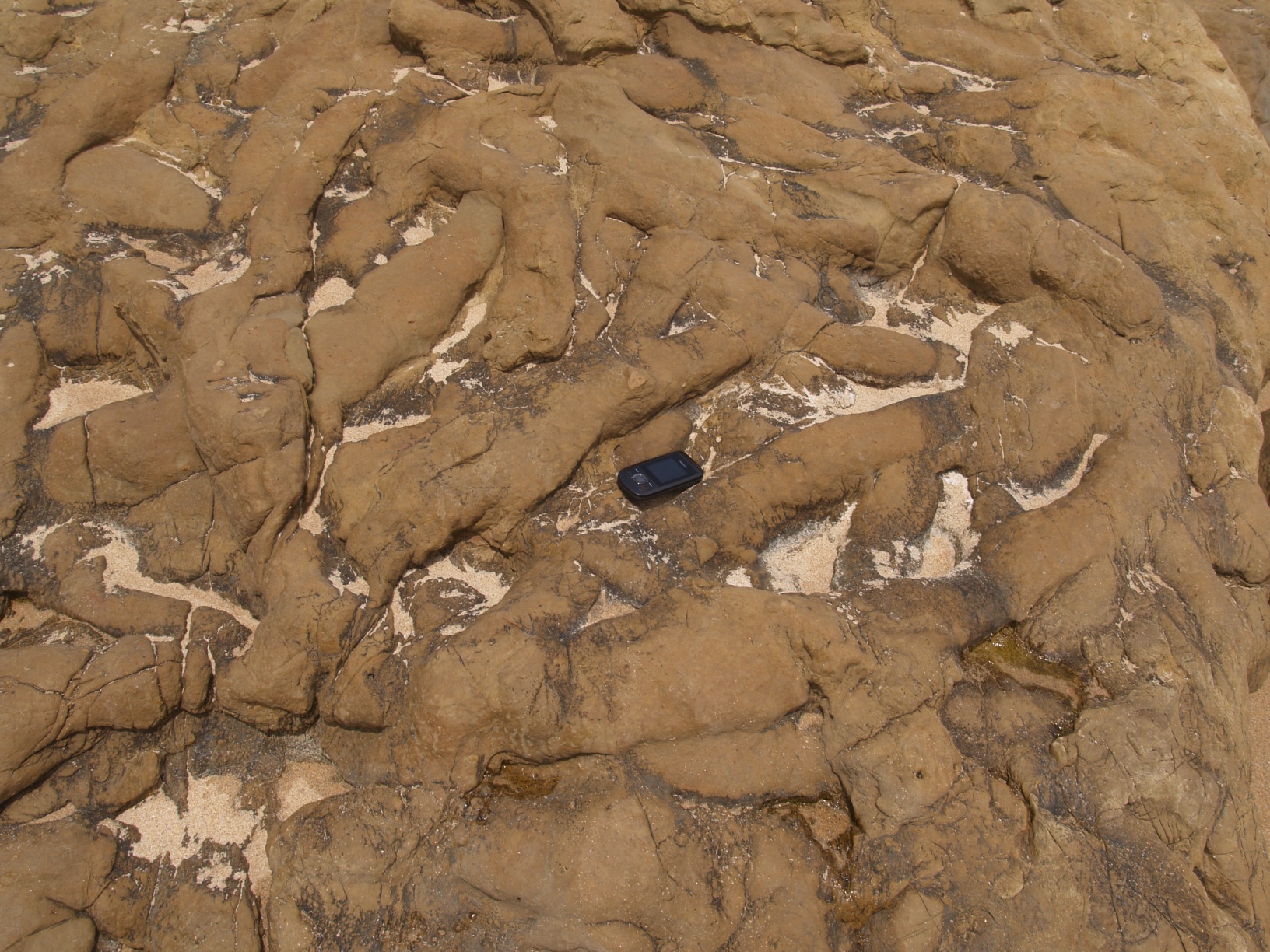
Figure 102G – Preserved burrowing casts in a clayey limestone (bioturbated) (Praia do Guincho, Cascais, Portugal).
What is more, this type of depositional environment has been present for a very long time indeed, as demonstrated by the Ordovician bioturbated horizon shown in figure 102H, which also shows the casts of two large tree trunks.
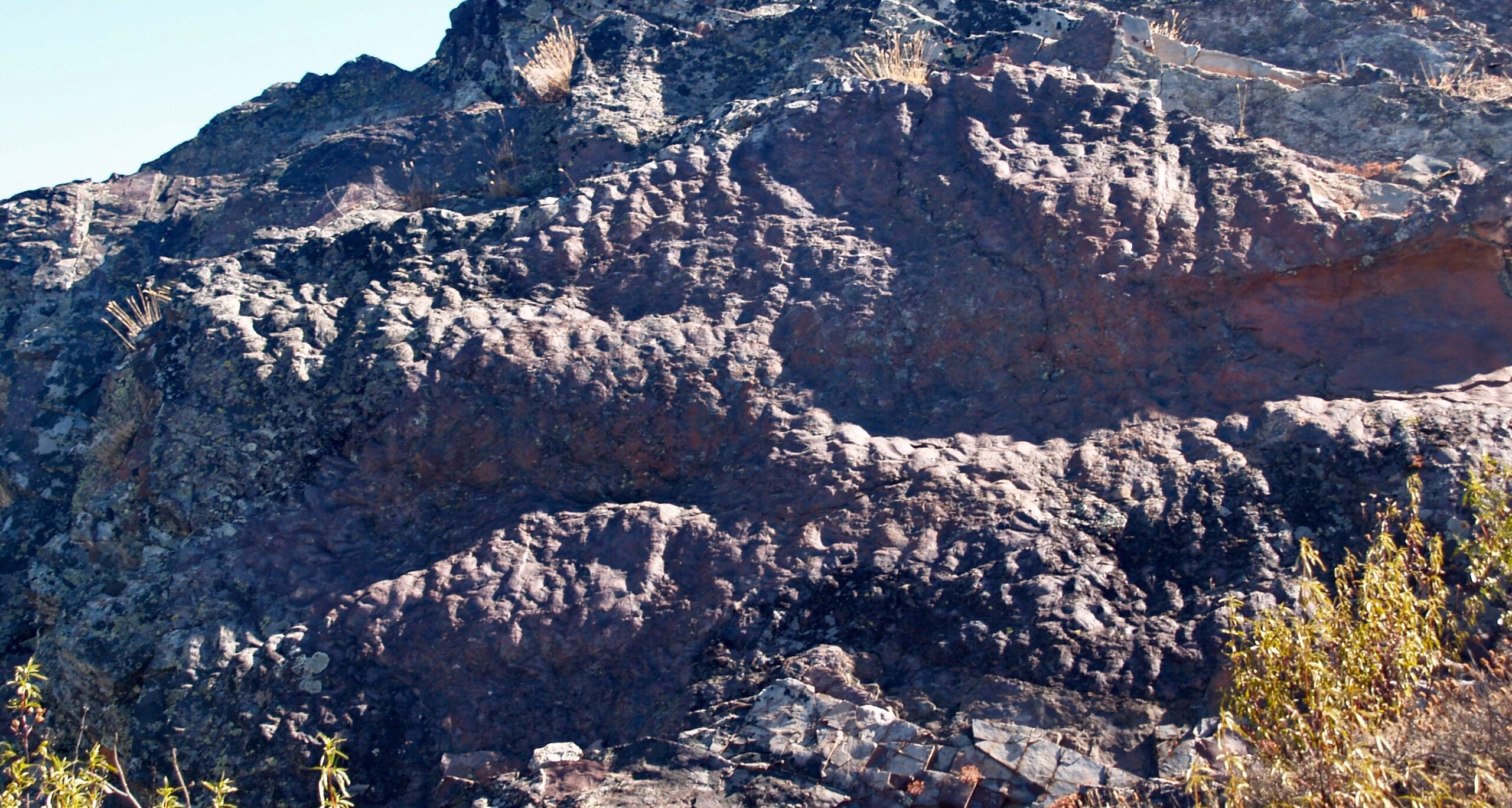
Figure 102H – A magnificent example of bioturbation in an Ordovician mudstone (Penha Garcia, Portugal) (hight of escarpment approx. 2 m)
6.4 Marine Environment
6.4.1 Coastal
Under sedimentation, we are interested in prograding coast lines, that is, where sedimentation is taking place, with a consequent shore accretion. Figure 73B shows very nicely a prograding situation with a well defined on-lap phase. As for our example of the Catumbela River in Angola, it is impressive that even though the river is quite large and carries vast quantities of water, its mouth is actually parallel to the coast, pointing northwards (fig. 103).
This is caused by the northwards flowing Benguela sea current which is even stronger. Hence, as the river water impacts the ocean current, its speed is dramatically reduced and the bed load particles are deposited, forming a sand barrier termed off shore bar, which progressively grows northwards. With time, this bar widened and the shore line pro-graded giving rise to sand banks, lagoons and marshes (fig. 104).
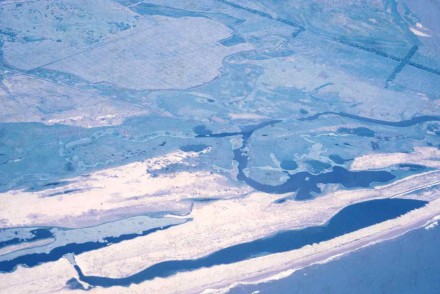
Figure 104 – The coast line just N of the river mouth with a pro-grading marshy shore line (Catumbela River, Angola).
Due to an initial coastal reentry, the pro-graded area became quite wide and that is where the town of Lobito developed (fig. 105),
with the harbor having been formed by the natural extension of the off shore bar created by the Catumbela river sediments (fig. 106).
A very conspicuous feature of these arenaceous coastal environments is the development of ripple marks. The example shown in figure 106B is quite striking because the upper bedding plane has current ripples, that is, asymmetric, indicating water flow, suggestive of an environment still under the influence of a river or, with sea currents. On the other hand, the lower one only 5 cm above, has symmetric ripples, indicative of still waters where the ripples are developed by waves caused by the wind. Hence, there is quite a marked facies change, possibly within a relatively short geological time. Significant too is the orientation difference between the two sets of ripples.

Figure 106B – Ripple marks in quartzite (photo width, approximately 1.5 m) (Ferro Quarry, Pretoria, S. Africa).
It is worth noting too that a section across a sandstone formed by the progressive development of ripple marks shows crossbedding. See figure 107 for an ordinary example,
and figure 107B for a rather unique case where the cross-bedding is enhanced by pyrite.

Figure 107B – Cross-bedding enhanced by pyrite in Main Reef internal waste (East Driefontein Mine, Carletonville, S. Africa).
Also, the visual characteristics of this cross-bedding looks rather similar to those developing in (fig. 91),as well as alluvial dunes (fig. 73B), but at a much smaller scale. This difference is important because the physical forces involved have completely different dynamic characteristics and thus are not comparable, even though they have similar appearances.
Finally, as already mentioned, these beach environments can be very rich in animal life and when there is a limited supply of inorganic clasts, assemblages composed entirely by the accumulation of mollusk shells may occur, giving rise to bioclastic limestone beds (fig. 108).
6.4.2 Shallow Marine
Going away from the coast but still within the continental shelf, in areas with a tropical climate, there is the formation of fossiliferous limestones consisting primarily of coral skeletons originating from the barrier reefs (fig. 109)
6.4.3 Continental Slope
Turbidites are defined by Wikipedia as being formed by turbidity currents that develop at the edge of the continental slope, and consist of a gravity driven turbid mixture of sediments temporarily suspended in water. I know practically nothing about them and have no related photographs, but they must be mentioned, since they are the only true clastic sediments occurring in this environment and form a very significant portion of the sedimentary group of rocks.
6.4.4 Pelagic
Further away from the coast, outside the continental shelf, very little deposition takes place on the sea floor, other than the very slow accumulation of dead plankton and the skeletons of deep water dwellers. Some of the plankton inhabitants have silicious shells and others as well as some algae, produce minute amounts of calcium carbonate. The accumulation of these products on the sea floor often consolidate forming a succession of alternating layers of biogenic limestone and chert. Such a succession is the absolute proof of deposition in a pelagic environment. A very good example of these limestones is the thick succession of the Transvaal Dolomite in South Africa, that contains very abundant inter-layered chert bands (fig. 110). For diamond drilling purposes this is absolute agony, because the very sharp alternation between the relatively soft limestone and the thin but very hard chert bands, destroys the drilling crowns in no time at all.

Figure 110 – Column of well marked alternating dolomite and chert (positive relief) (view approximately 10 m high) (Sabie River. S. Africa)
6.5 Non-Clastic Sediments
These are sedimentary rocks formed by the precipitation of chemical compounds carried in solution by the water. Naturally the components of these rocks will be those that are most soluble, like salt, gypsum, chert and calcite.
6.5.1 Chemical Precipitates
This is the general term for rocks originating from the precipitation of the substances under saturated solutions. Of these, the most abundant by far, are limestones which are constituted almost entirely by calcite. They are generally fine grained and range in colour from almost white, when very pure, to varying shades of gray depending on the quantity of organic matter present.
Often these limestones contain levels rich in chert nodules that originate from a diagenetic silicification within the rock in which they occur (fig. 111). In other words, these chert nodules represent a post depositional modification with no significance relative to the identification of the depositional environment, as opposed to the biogenetic assemblages mentioned above.
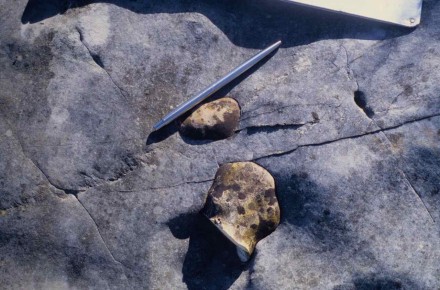
Figure 111 – Close up of silica nodules within a chemically precipitated limestone (Serra do Sicó, Portugal).
Travertine is another striking chemical precipitate, defined by the glossary of the American Geological Institute as a dense, finely crystalline concretionary limestone formed by the rapid chemical precipitation of calcium carbonate from saturated solutions on to the surfaces over which it flows. A contemporaneous example occurs at Ulco, South Africa (fig. 112). It has a fan shape and is being built by a stream falling over a Northern Cape dolomite ridge. The water flowing over the ridge is saturated with the calcite it dissolved, and than precipitates covering every surface along which the water runs, thus causing the growth of the fan.
A closer view of the continuously growing ridge caused by the accumulation of calcite along the stream is shown in figure 113.
In fact, one can see growing grass stems being coated by calcite (fig. 114).
Diamond drill core cutting through the fan sequence proves that its development was caused by the continuous coating of whatever materials over which the saturated waters flowed (fig. 115).
6.5.2 Evaporites
Also defined by the American Geological Institute Glossary, an evaporite is composed primarily by a solution that became concentrated due to the evaporation of its solvent, for example the present day coastal salt pans, of which I show here a rather unique example because it occurs in the volcanic Sal Island of the Cabo Verde Archipelago, within the crater of an extinct volcano. The base of the crater is below sea level and, due to the lavas being very fractured, the sea water seeps into the crater, where the water evaporates because of the intense heat caused by the local desert climate, within a totally enclosed area, just like in a cooking pot (fig. 115B).
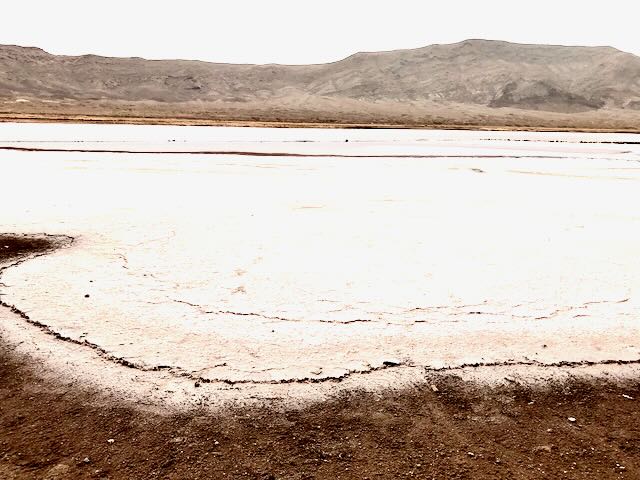
Figure 115B – Natural salt evaporating pan at the base of a volcanic crater (Sal Island, Cabo Verde)
In nature it may happen that a sedimentary layer of salt which has a relatively low SG, is covered by another layer of material with a considerably higher SG. If later, during the post depositional compaction stage that mass of salt is subjected to unstable adjustments, that may cause an upwards high velocity movement of the salt through the higher density layer covering it and that, when in a large scale, forms a diaper.
Gypsum evaporites are also quite frequent, but with considerably smaller dimensions, and I saw a relatively large deposit in Angola. Unfortunately I did not have a camera, but I collected a specimen (fig. 116).
Also, gypsum as well as calcite may form in desert pools, or from underground water brought to the surface by capillary action. It is under these conditions that the gypsum crystals known as desert roses form (fig. 117).

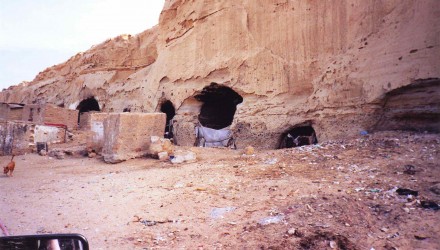
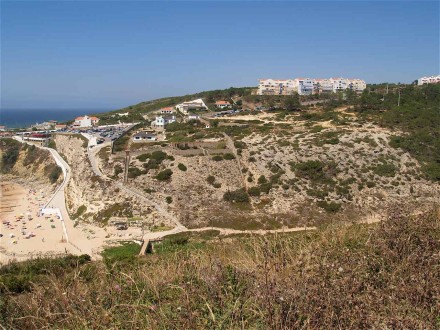


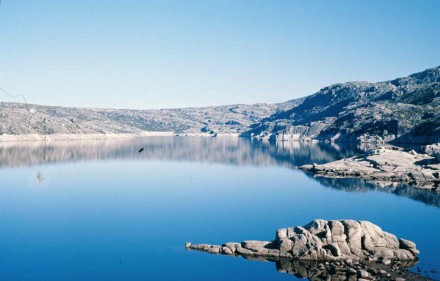
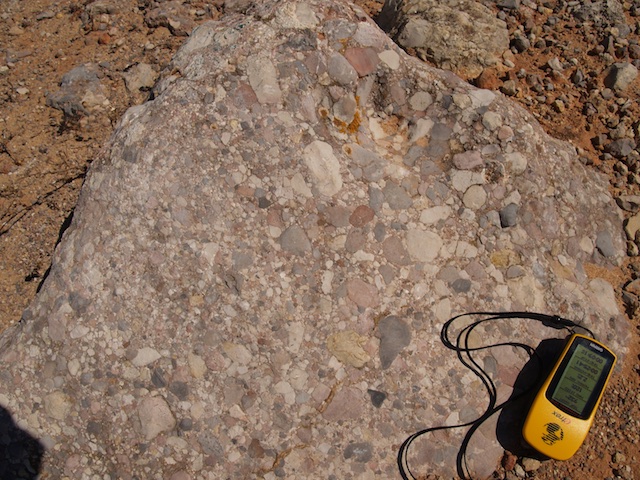
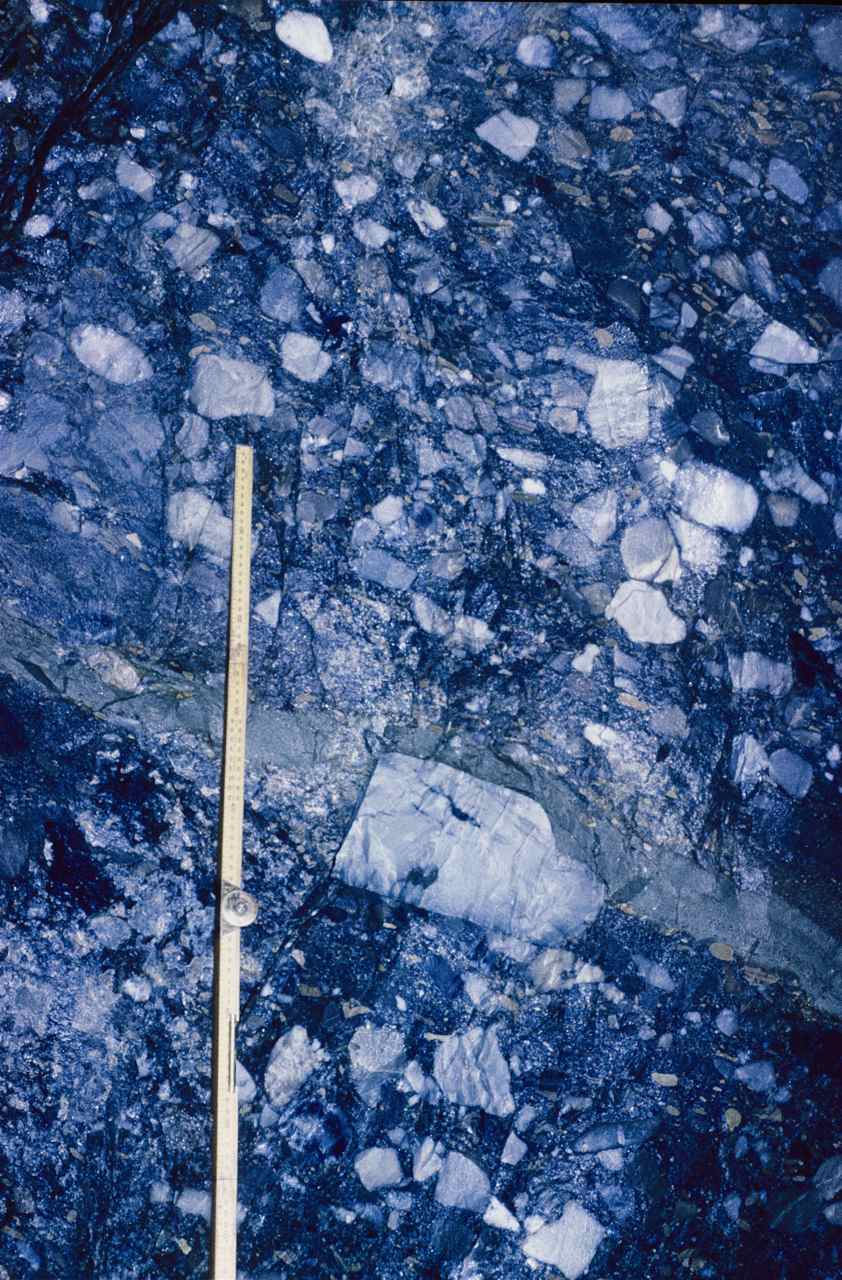
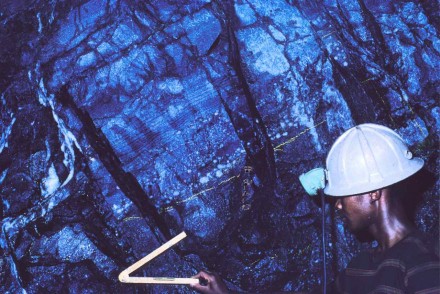
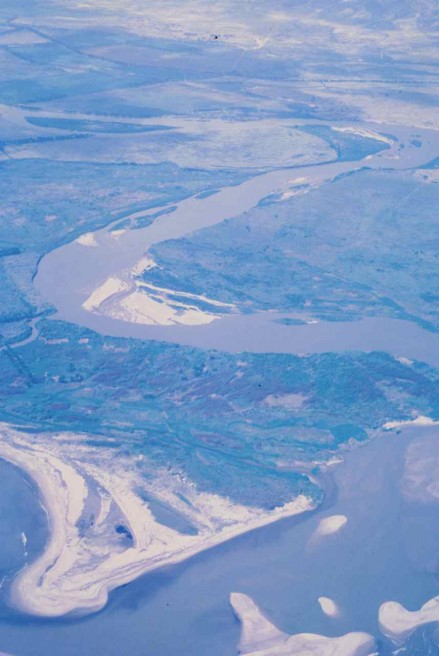
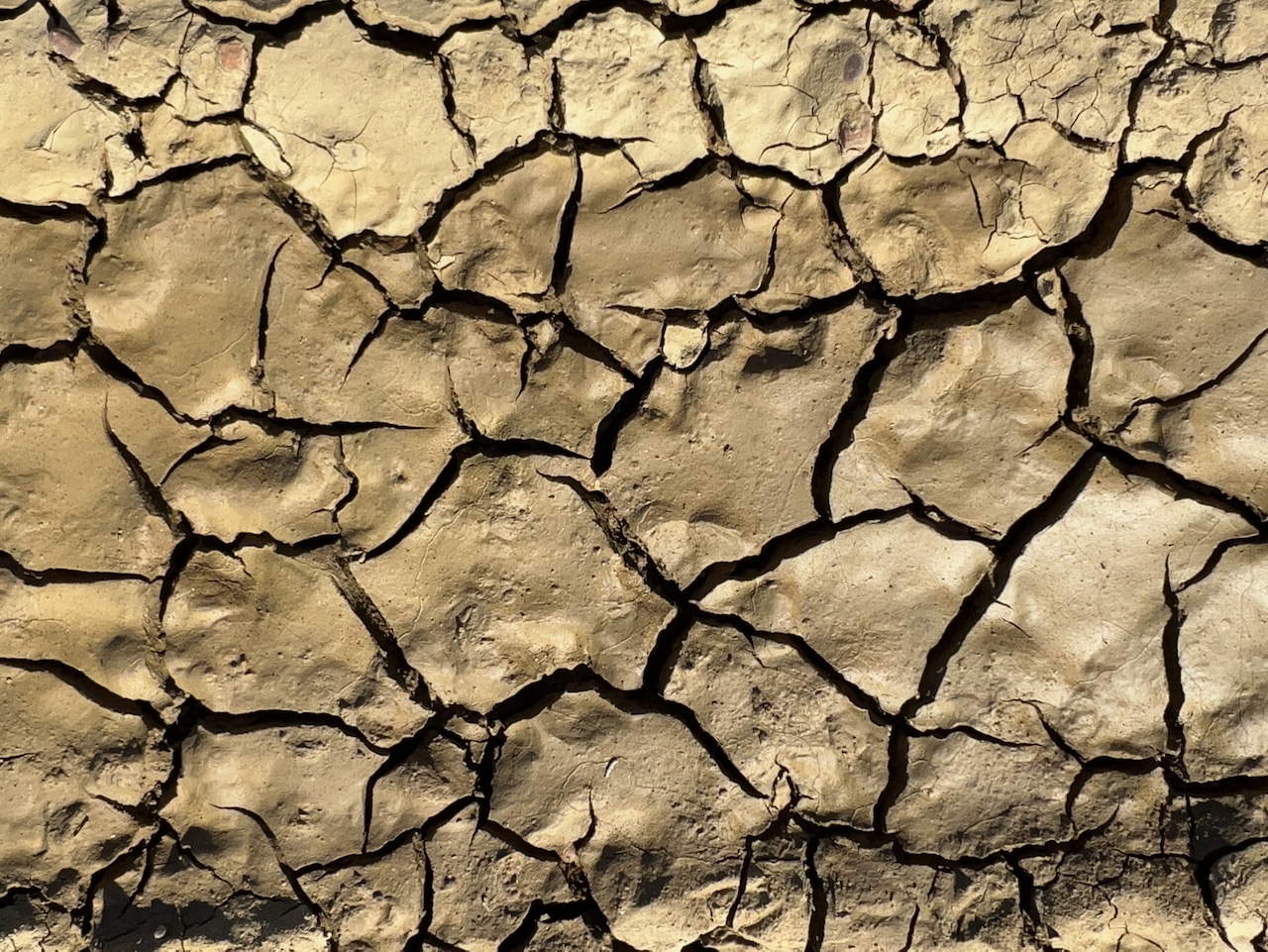
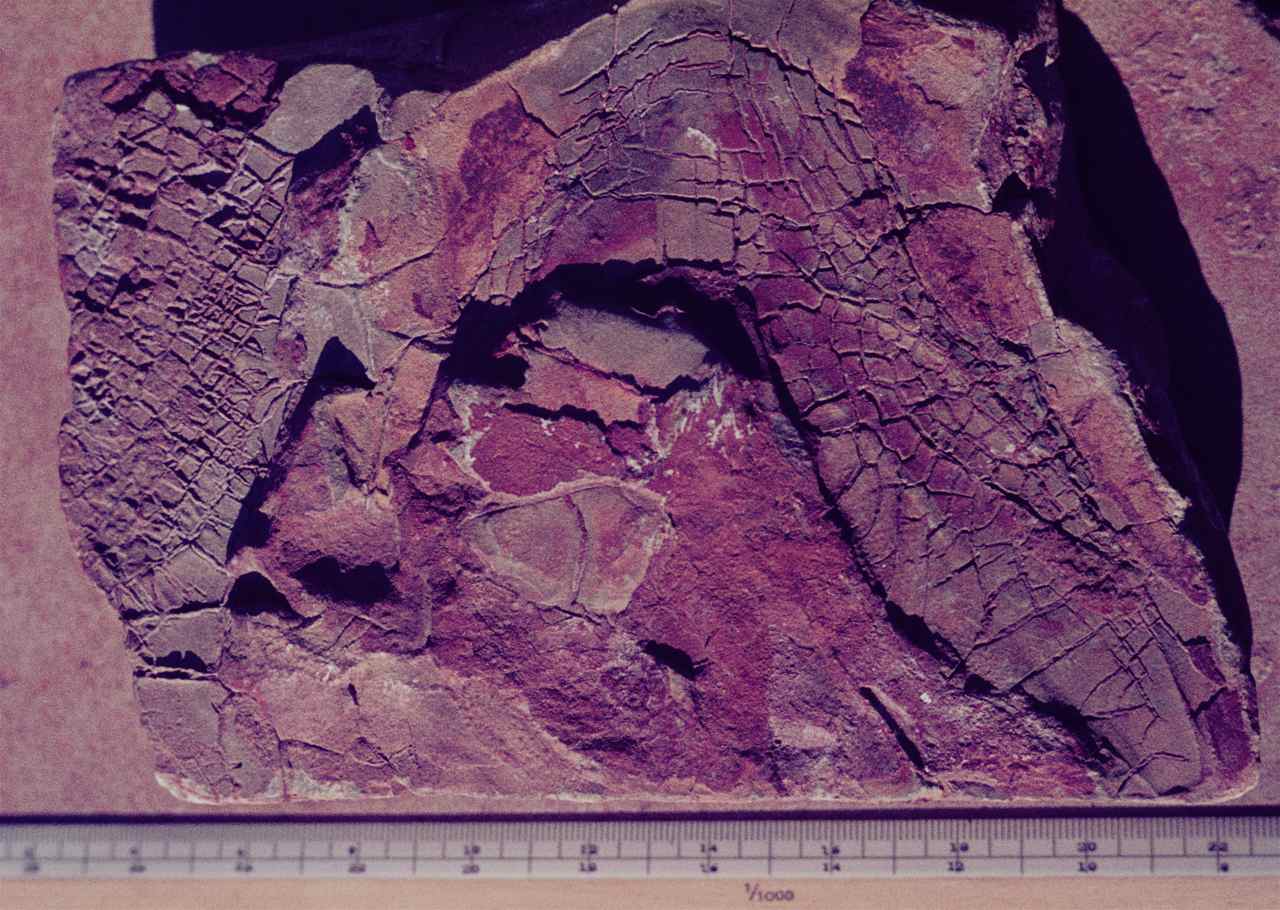

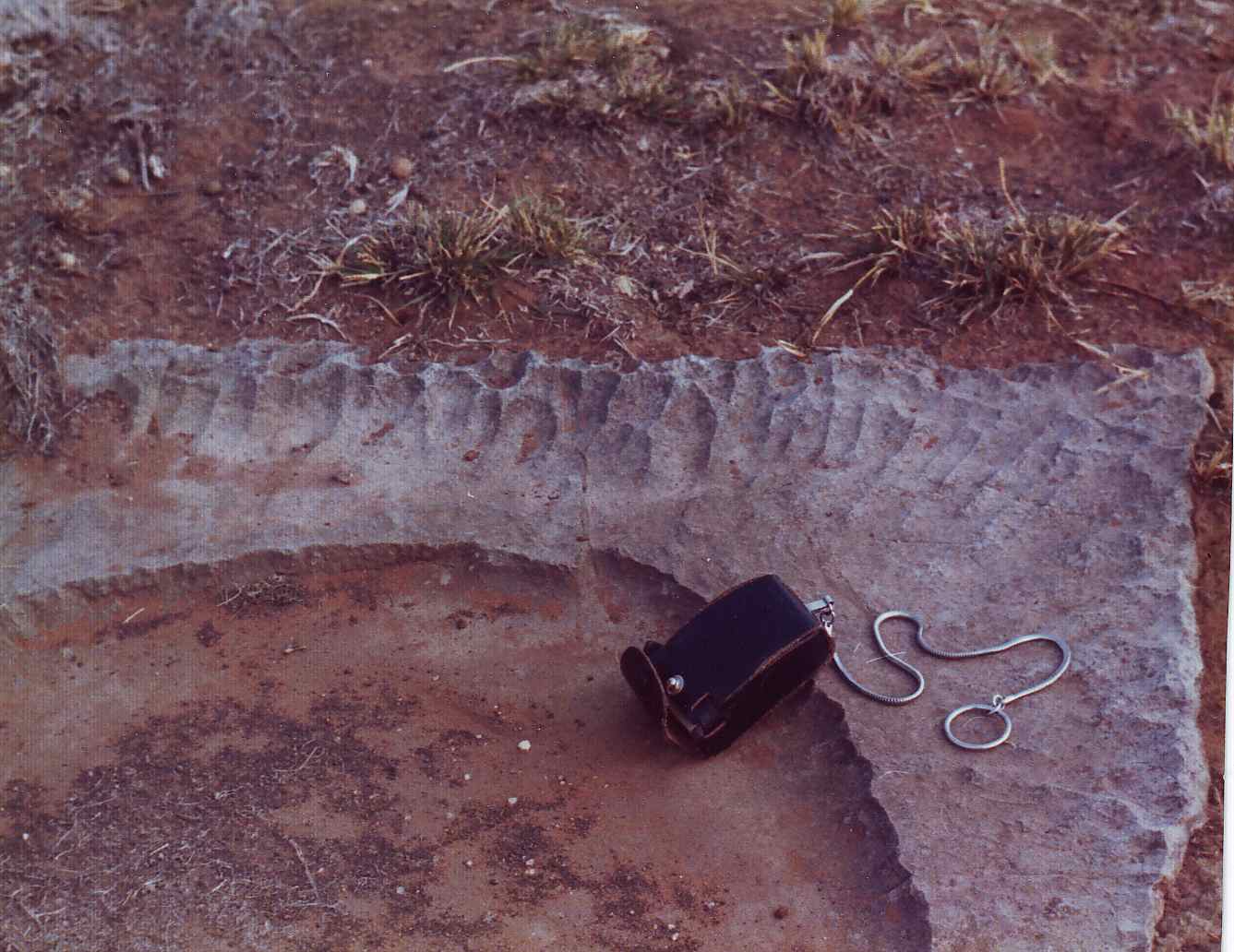
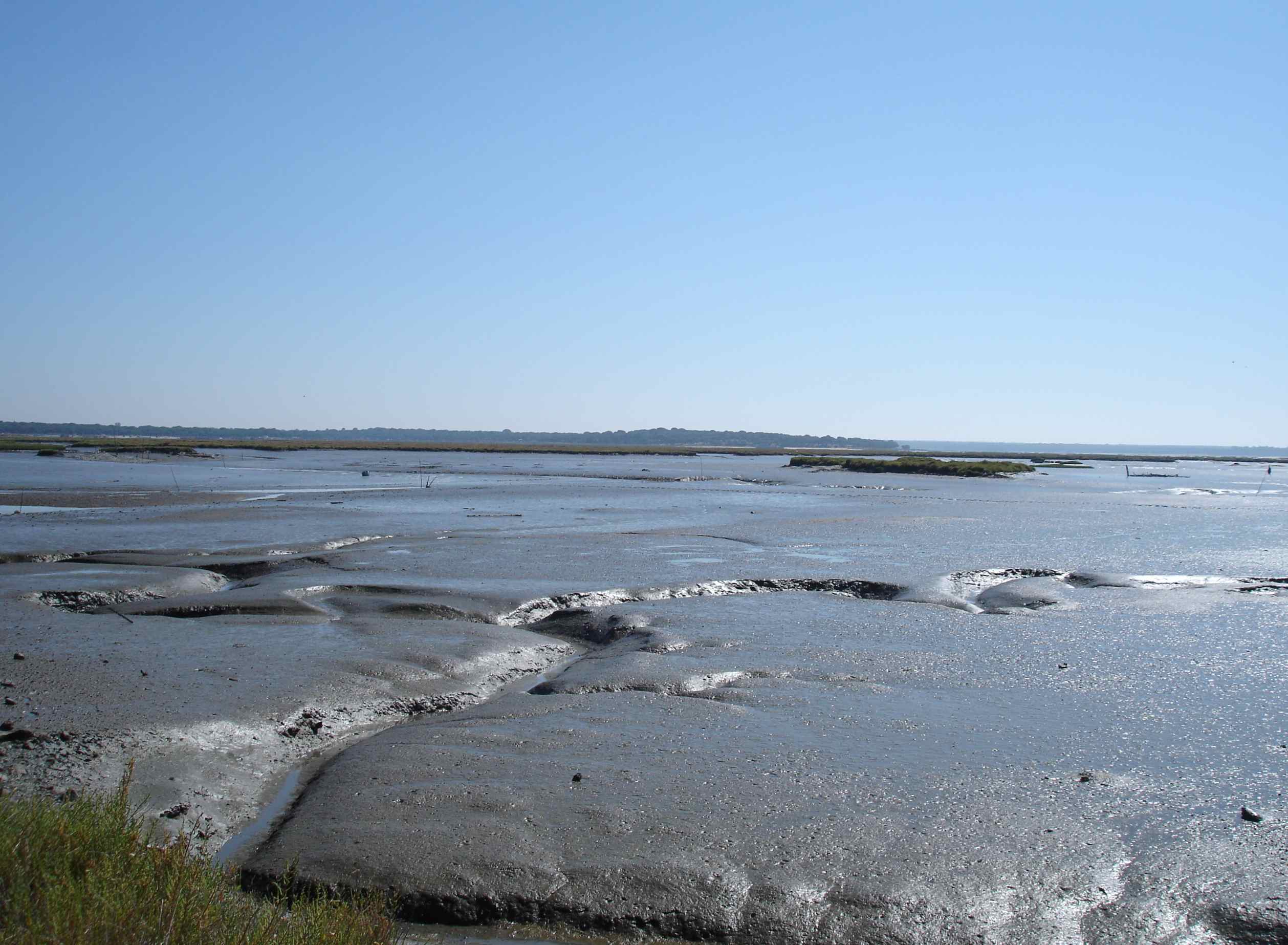
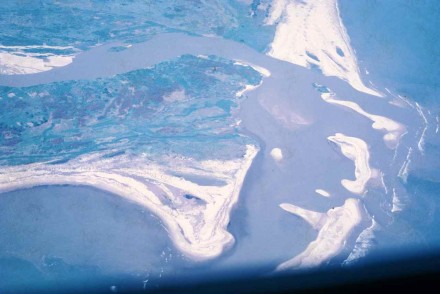

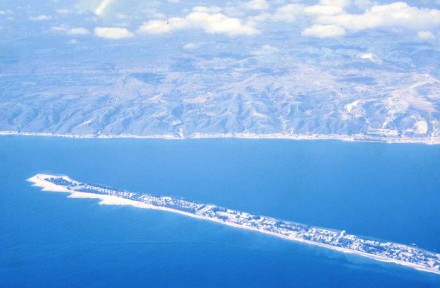
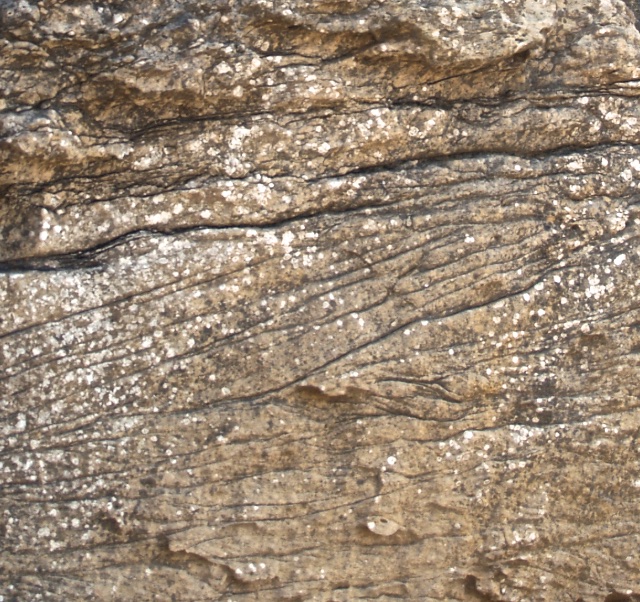
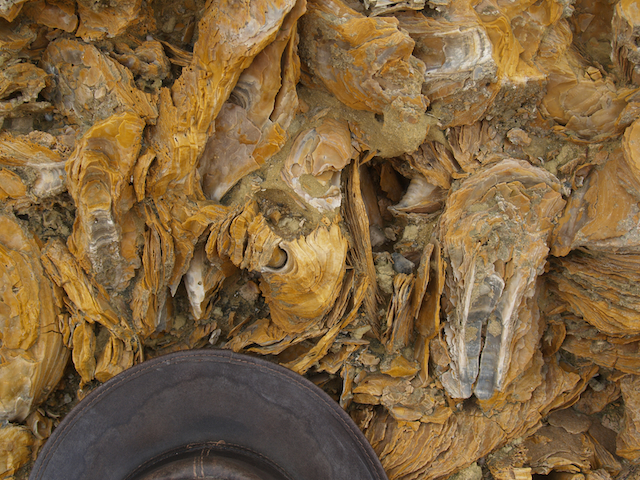

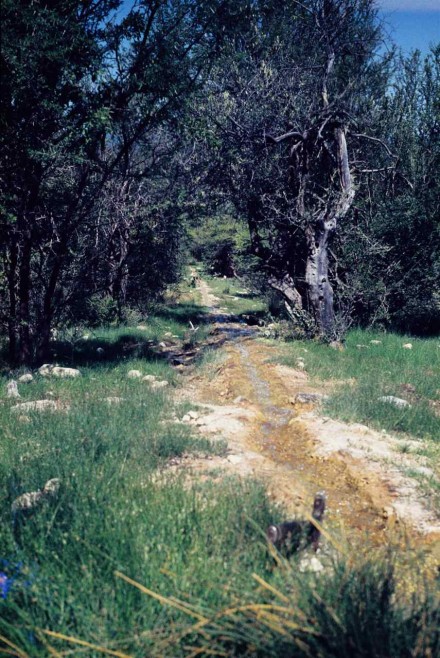
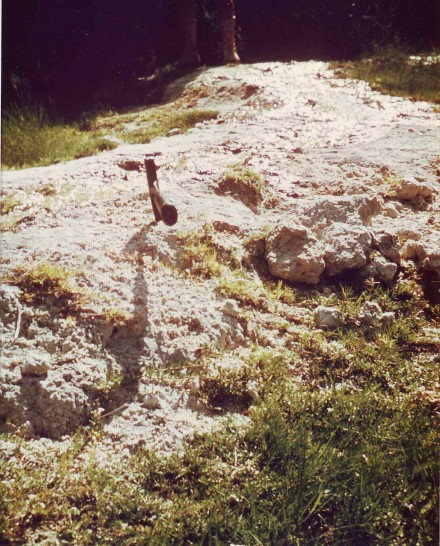
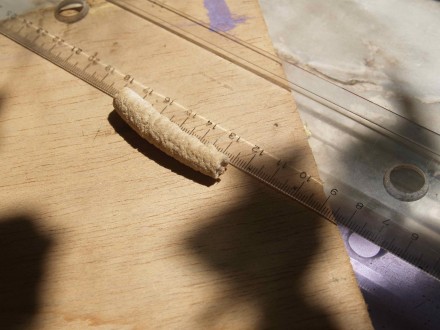
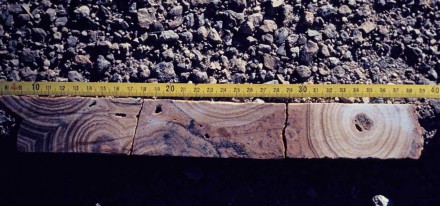

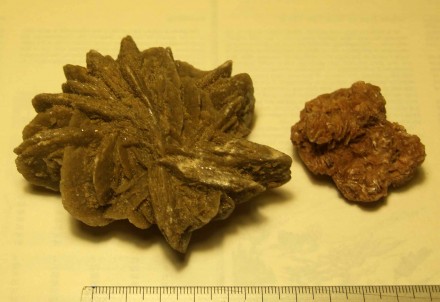
Sir,
I would hesitate to call the tufa/travertine deposits displayed in fig. 119 and fig. 120 as “evaporites”. As you have noted, these deposits form from surface waters saturated with calcium carbonate. The process of chemical precipitation occurs when carbon dioxide gas is lost due to agitation (like shaking a carbonated beverage). Evaporation of water is not involved in bringing the solution to chemical saturation. Perhaps simply referring to these deposits as chemical precipitates would suffice. In truth, most limestones are not evaporites, rather biological or geochemical precipitates. However, calcrete and carbonate nodules in soils are indeed influenced by evaporation.
Kind regards,
Dr. Doctor
Dear Sir,
Thank you for your welcome comments and I hope that the resulting alterations are satisfactory.
Best regards,
Vitor Pacheco